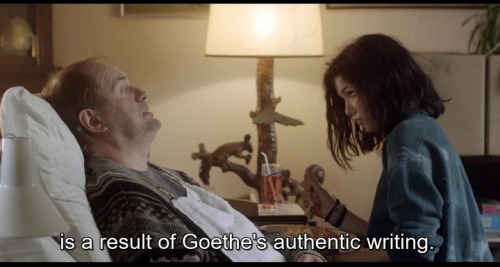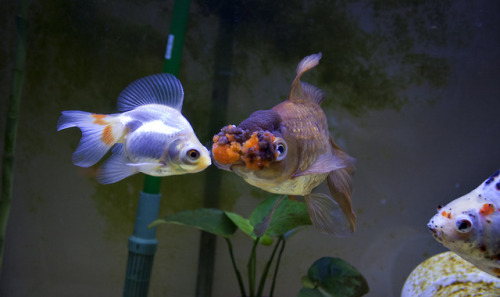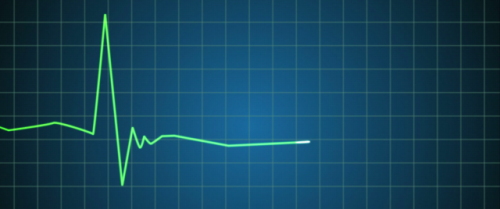#euthanasia
Pet aging, death, below the cut.
We’re taking my elderly poodle, Morgan in to be euthanized today. It’s time.
I’m waiting for my wife to get back from the film festival she was at in Pittsburgh. We’re spoiling him as much as we can until his appointment.
Currently volunteering a 3hr shift to the Pet Loss Support Hotline at MSU CVM. I am a firm believer that our ‘pets’ are a part of our family and if you are grieving, struggling to cope with their loss, then there should be someone there to help you. Tonight, that might be me!
If you or anyone you know is struggling with the loss of a pet and feels like they need someone to talk to, there are options!
- The Listening Ear 24-hour Crisis Hotline: (517) 337-1717
- The Iams Pet Loss Support Resource Center: (888) 332 7738 [M-F 8-5]
- WSU Hotline: (886) 266-8635
- Until April 20th, 2017 MSU Pet Loss Support Hotline: (517) 432-2696
6:30 pm - 9:30 pm EST [T,W,Th]
IF I COULD SPEAK TO A DYING DOG I WOULD TELL THEM HEAVEN IS REAL. I WOULD HOLD THEIR LITTLE HEAD AND WHISPER THAT HEAVEN IS FULL OF RIB EYE STEAKS AND BUCKWHEAT FIELDS AND SO MANY RABBITS TO CHASE.
I WOULD TELL THEM IT WON’T HURT. I WOULD TELL THEM ITS LIKE FALLING ASLEEP. I WOULD WRAP THEIR BODY IN A WARM TOWEL AND SAY “GO ON AHEAD, I WILL MEET YOU ON THE OTHER SIDE.”
You can talk to a dying dog. They may not understand your words but they understand your heart.
They hear that they have been a Good Dog and they know they are So Loved. They know that you are sad and do their best to comfort you because they do not understand why you are sad, they are right here.
They understand that there is food and people who love them.
They understand they have been promised rabbits to chase.
They know heaven is real. They have been living here. But now they have to sleep.
You can talk to a dying dog.
:/
Hawthorn’s nasal tumor is getting quite a bit larger. It’s begun to affect his breathing, and in the last day or two it’s started to ulcerate. Those were my criteria for “it’s time”. I’ll give him a week full of treats, but next Friday he’s going to come to work with me for the final time.
Apparently I wasn’t joking all those years ago when I said my senior cats would all go in the same year.
Well, tomorrow is the day I say goodbye to my last senior cat. Hawthorn’s nasal tumor is blocking most of his ability to breathe through his nose and that was one of my Quality Of Life cutoff points. I could, possibly, keep him going for several more months but cats aren’t meant to breathe through their mouth and his appetite is down again for his normal food.
He is not in any way suffering at this moment. He’s probably not even in much of an appreciable level of discomfort. He’s still actually happy- he harasses me for lap time, leans into my chest so I’ll rub my chin on his head, and would spend hours in my arms drooling on me if I let him.
And that’s why this is the correct time to let him go.
We’re euthanizing her today. It’s time. Thank you all for your kindness and good wishes. She smiled when I told her you sent her love.
So, Fishblr friends, I have some happy news and some sad news. The happy news, first, you might have guessed - I welcomed a new friend into the tank! The little white telescope butterflytail is Snow Pea. I picked her up the same day I picked up my new tank stand; she was so active and friendly, and I couldn’t leave without her :) She’s been a great addition to the tank and everyone loves her!
—
Now, for the sad news. I held off posting here for the past few days since I knew how this was going to end. This morning I said goodbye to my goofy little pom-pom Chai. She developed dropsy out of nowhere about a week and a half ago. Knowing that dropsy is not something fish generally rebound from, I was worried. I treated the tank immediately with my usual meds (these will not affect the bacteria in the filter btw) and kept a close eye on her. She didn’t seem to be getting worse and had only slightly pineconed up until yesterday. I did not remove her from the main tank, as dropsy is not usually contagious unless it’s the result of a bacterial outbreak and I did not suspect that here. Only Chai was being affected, and she was still very active, eating normally, etc. I didn’t think it would be right to isolate her when I knew she had basically no chance of recovery in the event this was renal failure (I highly suspected it was). She would have deteriorated quickly in isolation, and spent her last days alone. I didn’t want that for her. The other fish were not picking on her, and she was not struggling in the main tank. I wanted her to spend her remaining time with her friends in the place she has always known…since I didn’t exactly know how many days she would ultimately have left. My criteria for determining whether it was “time,” were: whether she was responsive, eating, active, moving without too much struggle, and no external sores or lacerations. Last night, she was hungry but couldn’t chew. She had trouble maintaining equilibrium. The other fish were very obviously giving her space and leaving her alone. I knew this morning was going to be her time…and I am glad I didn’t wait any longer. After she was gone it was apparent how much fluid was filling her abdomen. She would have been in a lot of pain soon. I think I made the right choice.
I will miss her. A lot. She was the last of my fish from Boston, and she made it through so many crazy times. She almost died in transit - twice! She came to me from Dandy Orandas…so I have no idea how old she really was. She spent 4 and a half years with me, and was from China before that. When I got her, she was only a little smaller than she was today. I estimate she was at least 6 years old, but she may have been as old as 8. I loved her so much and today has been sad missing her in the tank. But I also know she’s not in pain anymore, and somewhere out there she’s swimming around with Mr. B and having all the best fishy snacks she can dream up!
Thanks for reading <3 I have a few more photos of her from a recent shoot, before she got sick, that I’ll post in the coming weeks.
Post link









euthanasia coaster !!! a cool concept i heard of when i was listening to distractible :)
[tw for death and stuff like that if u decide to read up on it ! (AND GO LISTEN TO DISTRACTIBLE)]
A female patient, woman with landscape, 1929.
While this haunting painting was not destroyed by the Nazis, its creator was. Elfriede Lohse-Wachtler was diagnosed as schizophrenic in 1932, was forcibly surgically sterilized in 1935, and euthanized in 1940 at Pirna-Sonnenstein.
Post link

…this meme is for me and the weird outlets I have at work :|
I think a lot about what people think we do with their animals after they leave the clinic, and I wish I could assure them I treat their animal with the same respect I did my own.
Euthanasia appointments are so difficult and we aren’t really prepared for them by school, in the sense that those appointments are more about dealing with the owners almost more than the animal.
Anyway I always think about this minor character in a Hellraiser sequel no one has seen when I try to explain why I talk to the animals on the way to the freezer.
Beating Heart Cadavers
Last year we had a terminal (non-recovery) fish practical which required fresh cadavers. The fish were humanely euthanised with an anaesthetic overdose. As an added precaution, the gill arches were then cut (causing them to bleed out and preventing respiration) and the spinal cord transected (obstructing electrical signals from the brain). Despite these measures, the fish hearts continued to beat for several minutes. Even once removed from the rest of the body, they continued to beat. As you can imagine, it was quite disconcerting, but we were all reassured that the fish were, in fact, dead and unable to feel any pain.
I hadn’t given it another thought until I came across this video yesterday and my curiosity got the better of me. So I did what any ex-vet student would do - RESEARCH!
The heart continues to beat because, unlike most muscles in the body, the heart doesn’t rely on electrical impulses from the brain, but instead generates its own electrical impulses from specialised cells within the heart. These cells can continue to fire as long as they have sufficient ATP (energy). Apparently this phenomenon can (and does) occur in humans too.
So then I started thinking about the process of dying, how “death” is defined, and what criteria are used to determine death. Is a patient dead when the heart stops beating, or when respiration ceases? Are they dead when there is no longer conscious thought, no response to stimulus, or an absence of electrical activity in the brain (“brain dead”)? Or a combination? It’s clearly a controversial question because death isn’t a single event, it’s a process! Cells, tissues and organs die at different rates.
While I was reading, I came across the term “beating heart cadaver” which I hadn’t heard of before. A beating heart cadaver is a body that is pronounced dead (by the brain dead definition), yet retains functioning organs and a pulse. Because the brain stem is dead and can’t control ventilation, the body is connected to a medical ventilator which keeps the blood oxygenated. This blood is circulated around the body by the heart, which continues to beat independently. Beating heart cadavers are known to “survive” for up to 20 years! These cadavers are even capable of maintaining pregnancies! Fascinating right?
In the vet industry we routinely determine whether an animal is alive or not simply by feeling for a pulse and using a stethoscope to auscultate the heart. I suppose if the heart ISN’T beating, the animal is definitely dead. And with pharmacological euthanasia, the cardiovascular system is likely to be the last to go (after nervous and respiratory systems). Even so, assessing cardiovascular function now seems an over-simplified means for determining death in veterinary patients. I will certainly be giving more thought to my death criteria from now on.
If you’re as fascinated by this topic as I apparently am, I found this interesting BBC article which is worth a read: http://www.bbc.com/future/story/20161103-the-macabre-fate-of-beating-heart-corpses
Check out the videos of my fish practical here: https://www.instagram.com/p/BtaeSQKnW-a/
Post link












